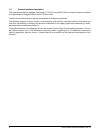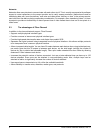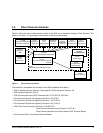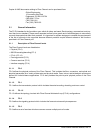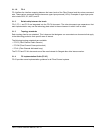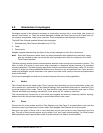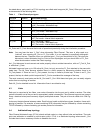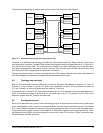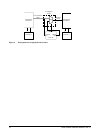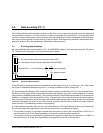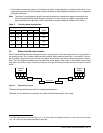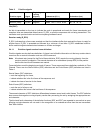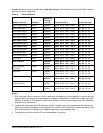
10 Fibre Channel Interface Manual, Rev. D
As stated above, ports used in a FC-AL topology are called node loop ports (NL_Ports). Other port types exist
as documented in the following table.
NL_Ports and FL_Ports discover their mode of operation dynamically during the initialization procedure.
Note. You may hear the term “L_Port” when discussing Fibre Channel. This term is often used as a
“catch-all” term meaning NL_Port or FL_Port when it is not important to specifically distinguish
between the two. Therefore, when you read the term L_Port, you should think of NL_Port when the
discussion is about Arbitrated Loop or Point-to-Point topologies, and you should think of FL_Port
when the discussion is about the Fabric topology.
An L_Port discovers its environment and works properly, without outside intervention, with an F_Port, N_Port,
or with other L_Ports.
Arbitrated loops can have up to 126 active NL_Ports, but only one active FL_Port attached to the same arbi-
trated loop. The NL_Ports discover whether there is a fabric present by discovering whether there is an
FL_Port present. If there isn’t an FL_Port present, the loop is called a private loop. If there is an FL_Port
present, the loop is called a public loop and the FL_Port is considered the manager of the loop.
The most commonly used ports are the NL_Port and FL_Port. With these two types, you can easily migrate
nodes from one topology to another.
Each NL_Port is attached to one link. Information flows in one direction only.
4.3 Links
Each port is comprised of two fibers, one carries information into the port and is called a receiver. The other
carries information out of the port and is appropriately called a transmitter. Fibre Channel supports two types of
fibers—electrical wires (most commonly copper) and optical strands. This pair of wires is called a link. See Fig-
ure 2.
Links carry the data frames between nodes. Each link can handle multiple frame types; therefore, frame multi-
plexing is possible. For example, a frame containing SCSI information may be followed by a frame containing
TCP/IP followed by a frame containing yet another protocol’s information.
4.4 Arbitrated loop topology
Fibre Channel Arbitrated Loops (FC-AL) attach multiple nodes in a loop without hubs and switches. The node
ports use arbitration to establish a point-to-point circuit. FC-AL is a distributed topology where each L_Port
includes the minimum necessary function to establish the circuit.
Table 1: Fibre Channel port types
Port type Location Associated topology
N_Port Node Point-to-point or Fabric
NL_Port Node in N_Port mode—Point-to-point or Fabric
in NL_Port mode—Arbitrated Loop
F_Port Fabric Fabric
FL_Port Fabric in F_Port mode—Fabric
in FL_Port mode—Arbitrated Loop
E_Port Fabric Internal Fabric Expansion
G_Port Fabric in F_Port mode—Fabric
in E_Port mode—Internal fabric expansion
GL_Port Fabric in F_Port mode—Fabric
in FL_Port mode—Arbitrated Loop
in E_Port mode—Internal fabric expansion



